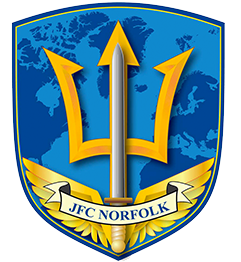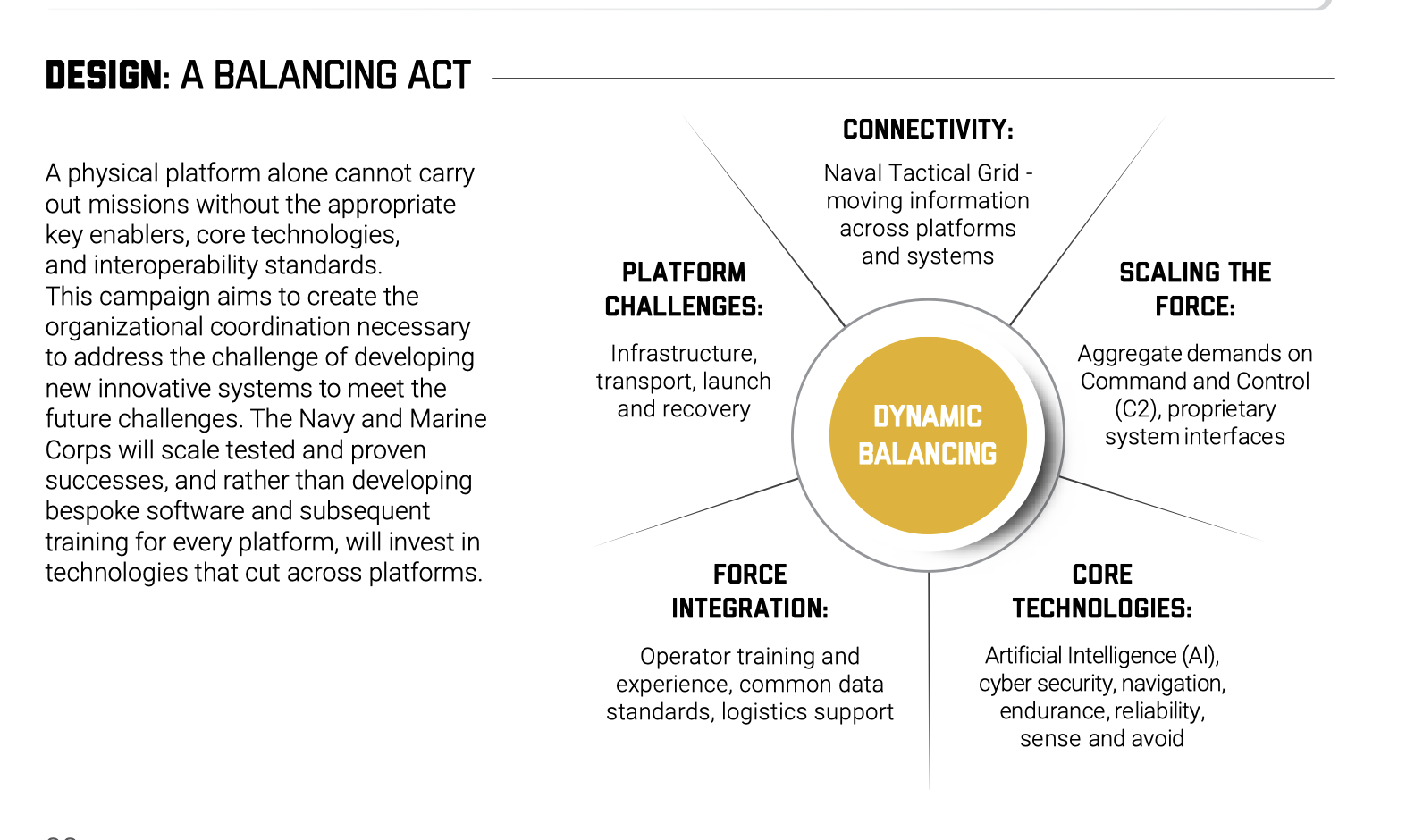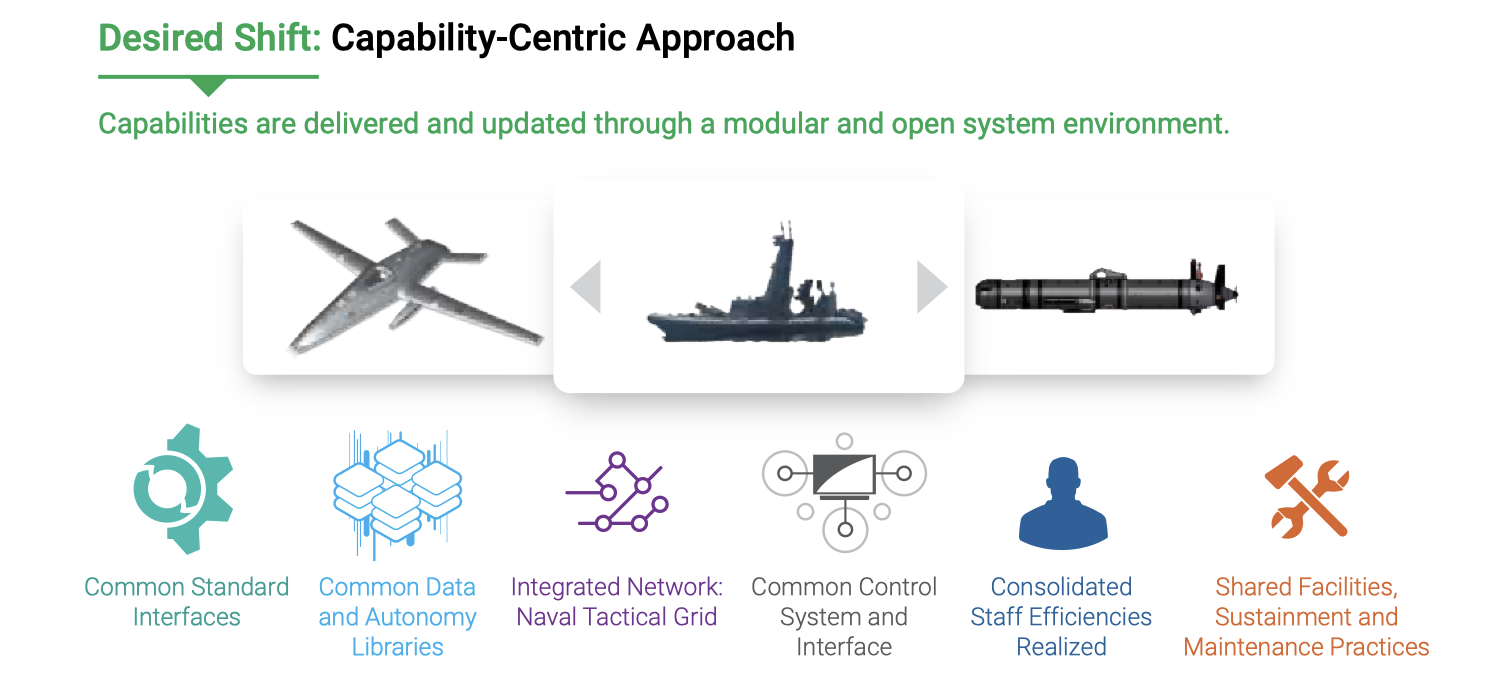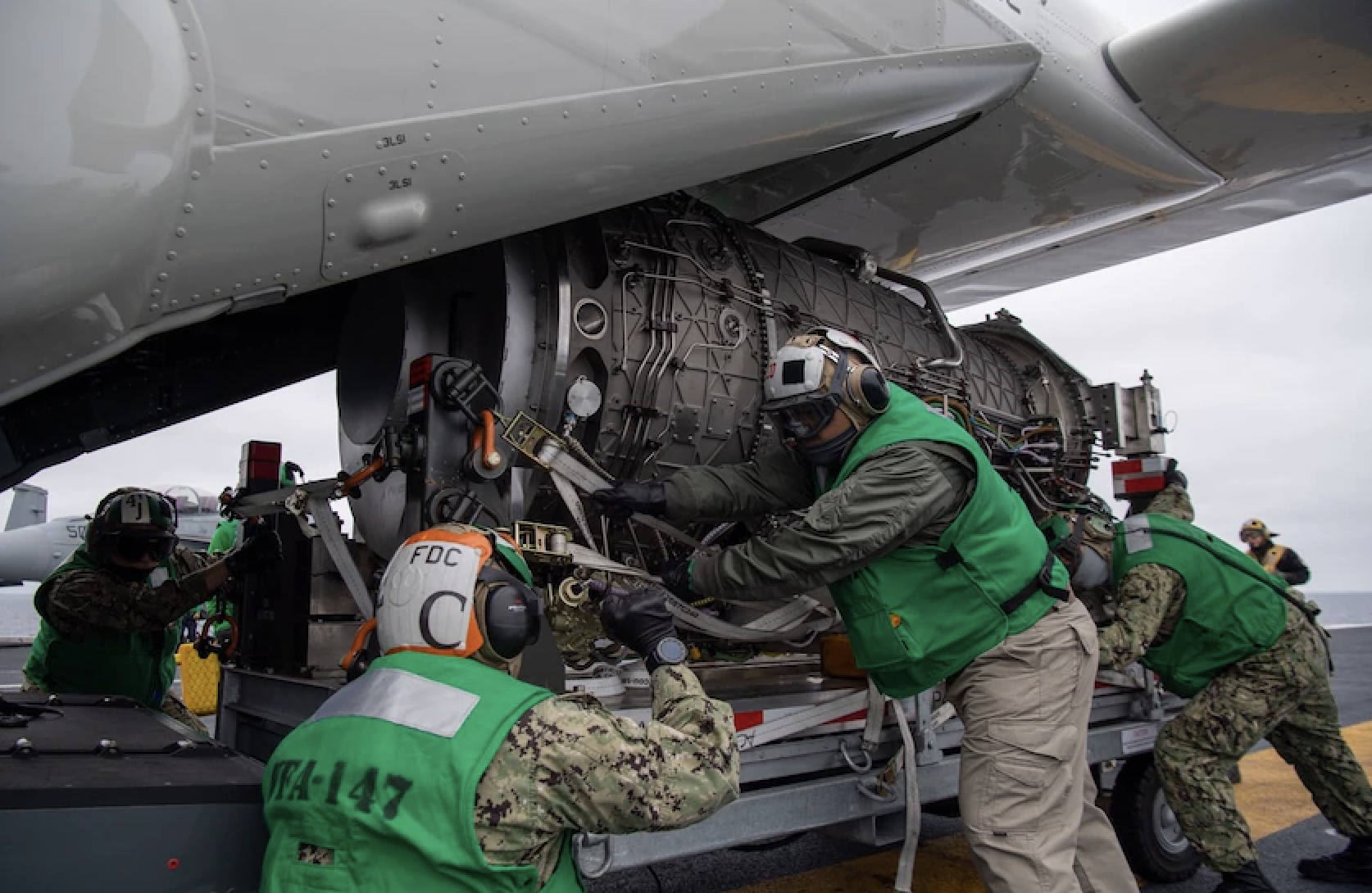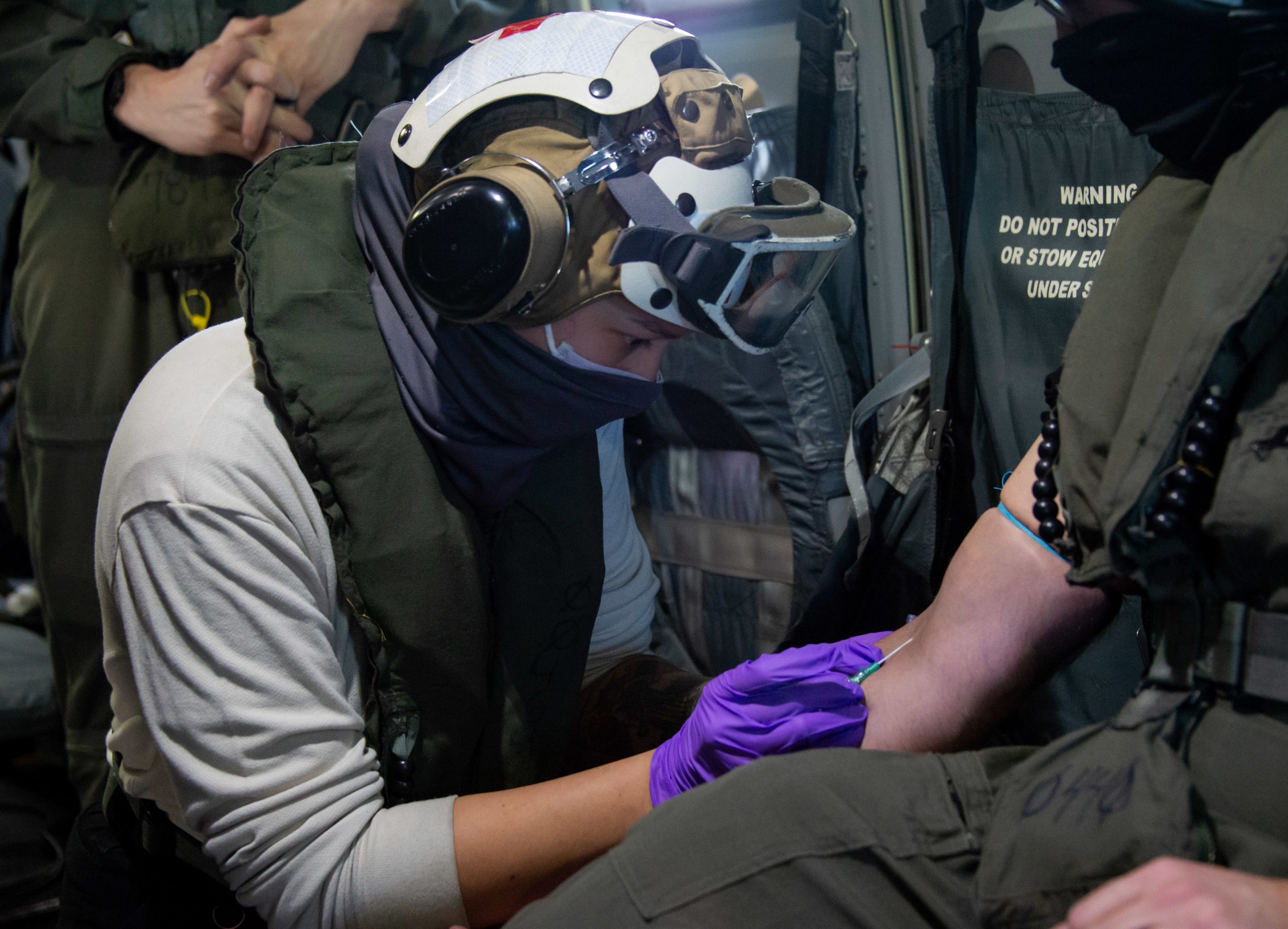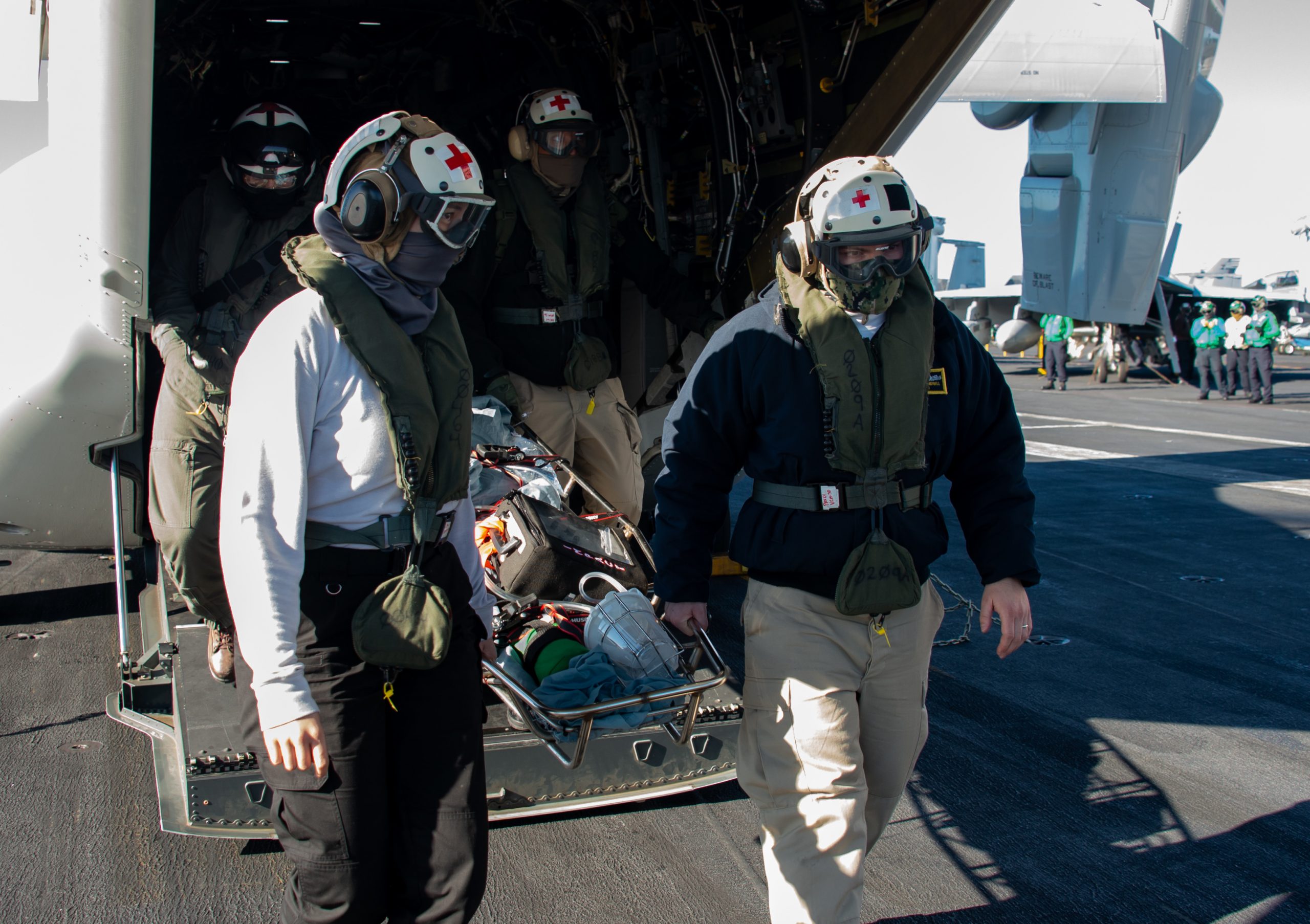By Robbin Laird
I have been focused for several years on what I see as a clear and dramatic shift from how civilians and the military have looked at the land wars in the Middle East to now dealing with adversaries who have built forces for contested operations across the spectrum of operations.
We have a generation of civilian and military leaders who have not lived in the context of dealing with peer nuclear powers with significant conventional capability. It is not surprising that understanding of escalation management has atrophied.
The strategic shift has a very dramatic impact on maritime and airpower, which clearly should be the ascendent services in the Pentagon to sort through the way ahead. And integration of air and maritime power is the key to meeting the strategic interests of the United States.
But the U.S. Army still predominates with a Sec Def from the Army, a Chairman of the Joint Chiefs from the Army and two 4 Army Four Stars in a theater where the U.S. Army does not have the central, perhaps even a central role to play, namely in the Pacific.
So how do we make the transition?
How do we shape a relevant concept of operations?
And how do we stop ground pounders from thinking that they can put missiles into the first island chain or on allied soil ringing China without even considering their impact on escalation management with nuclear powers?
It is useful to remember that the Russians face three nuclear powers in the Atlantic; and the United States and its Pacific allies face three nuclear powers in the Pacific.
Recently, I reviewed the new book by Ben Lambeth which provide his assessment of the shift from the pure dominance over airpower of counterinsurgency operations to the fight against ISIS, a fight which required airpower to remove the Army’s shackles on its proper use against a state-like competitor.
I followed up from that review to talk with the author about how he came to write the book and his sense of the challenges moving forward beyond the land wars.
Question: Why did you write the book?
Lambeth: “Looking back on my collected work over the past two decades, I’ve made a productive career of writing in-depth air campaign assessments, starting out with my chapters that revisited both the Vietnam air war and Operation Desert Storm in a book of mine published in 2000 called The Transformation of American Air Power.
“In the years since then, I went on to produce even more detailed studies of NATO’s air war for Kosovo in 1999, of Operation Enduring Freedom against the Taliban and al-Qaeda in Afghanistan that followed the terrorist attacks of 9/11/2001, and of the air contribution to the three-week major combat phase of Operation Iraqi Freedom in early 2003 that finally toppled Saddam Hussein.
“In light of that background, it seemed only natural that once our initially anemic response to the rise of ISIS in August 2014 eventually expanded into a more effective and sustained air effort, that I should take on a critical assessment of that campaign as well.”
Question: I was working for Mike Wynne at the time when the Sec Def and the Bush and then the Obama Administrations clearly cut back on the role of airpower and reduced it to support for the ground operations.
Was this legacy finally being shed in Operation Inherent Resolve?
Lambeth: “Clearly, as counterinsurgency operations became the predominant American way of war after 2003, the USAF lost a lot of muscle memory for doing much of anything else by way of higher-end force employment.
“And the predominant Army leadership at U.S. Central Command continued to apply its long-habituated Army thinking going forward into an entirely different situation that was presented by the rise of ISIS. A more assertive leadership in CENTCOM’s air component at the time would have pressed for a different response to the challenge it was handed in 2014 by arguing for targeting ISIS not as an insurgency, but rather as a self-avowed state in the making.
“However, CENTCOM’s commander, U.S. Army General Lloyd Austin III, simply assumed ISIS to be a regenerated Islamist insurgency of the sort that he was most familiar with, which it was not at all, and accordingly proceeded to engage it as just another counterinsurgency challenge.
“Eventually, his air component’s second successive commander, then-Lieutenant General C. Q. Brown, finally prevailed in arguing for deliberate strategic air attacks against critical ISIS infrastructure targets in both Iraq and Syria, not just for on-call air “support” to be used as flying artillery for the ground fight.
“One must remember that the vast majority of today’s serving U.S. Air Force airmen are only familiar with Operation Desert Storm from their book reading.
“And even much of the USAF’s more senior leadership today has never really been exposed to higher-end aerial warfare as we last experienced it over Saddam Hussein’s Iraq in 2003. Only now are we slowly coming to realize the opportunity costs that were inflicted by this neglect for nearly two decades, during which time we fixated solely on less-intense counterinsurgency warfare..”
Question: Then how do you see the challenge of transition posed by the strategic shift?
Lambeth: “It is clearly a significant one.
“And the continued absence of proper understanding where it matters most is suggested by the recent Army bid to deploy long-range missiles into the Pacific as one of their contributions.
“This is simply a crass attempted roles-and-missions grab in order to stay operationally relevant, yet in a theater in which airpower – both land- and sea-based –clearly offers the only cost-effective tool for addressing the challenges presented in that arena.
“In a way, we find ourselves today much like where we were at the end of the Vietnam War.
“While we were consumed then by the eight-year distraction of that self-inflicted experience, the Soviet Union enjoyed essentially a free ride for modernizing its nuclear and conventional force postures without significant offsetting measures by us.
“It took nearly two decades of hard work in the force development and training arenas for us to compensate in full for that failure to hold up our end of the strategic competition with Moscow.
“Fortunately, we succeeded just in time to pave the way for our eventual success in Desert Storm and for the collapse of Soviet communism that followed shortly thereafter.
“I believe we face a similar challenge today looking into the third decade of the 21st Century, with a rising China and a resurgent Russia now dominating tomorrow’s threat horizon.
“We need to recognize this and wake up to the fact that the challenges we’re now facing are totally unlike the challenge we faced in fighting yesterday’s land wars in Southwest Asia.
“But in order for that to happen, the country needs an amalgam of leadership that sees and understands this newly-emerging big picture correctly.
“I have long felt, indeed ever since Desert Storm, that CENTCOM is organized incorrectly. CENTCOM’s area of responsibility has long been air-centric, in my opinion. And yet that organization has been consistently commanded by a succession of Army and Marine Corps four-stars.
“That, to my mind, has repeatedly entailed putting a square peg into a round hole.
“I’ve often felt that it would have been truly an inspired move after Desert Storm if its commander who largely swung that war’s successful outcome, U.S. Air Force General Chuck Horner, had been appointed CENTCOM’s next commander to replace U.S. Army General H. Norman Schwarzkopf. Or, that failing, had the successful air commander for Operation Iraqi Freedom in 2003, U.S. Air Force General Buzz Moseley, been tapped to become the next commander of CENTCOM.
“Either move would have finally broken the mold of the ground services’ long-held but increasingly anachronistic monopoly on that key position in today’s world.
“That, in turn, might have made a fundamental difference in our subsequent combat experience in that part of the world for the better.”
See below, Lambeth’s Mitchell Forum overview on his book:
Lambeth provided three other fascinating pieces from his work over the years.
The first is an interesting comparison of fighter pilots to submariners; the second is his report on the MIG-23; and the third is a look back at the lessons which the post-Cold War years should have taught us.
The first was published in 2015; the second in 2016; and the third in 2013.
Ben's fighter-sub comparisonBen's MiG-23 flight report
Lambeth SSQ article



